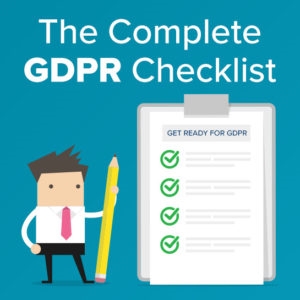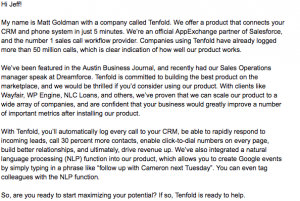— August 22, 2019

Lalmch / Pixabay
The software as a service (SaaS) industry is flooded—I’m talking 34,727 different software solutions across 745 industries. And the number of companies entering the market will continue to rise each year. In fact, according to Gartner, SaaS revenue is expected to grow more than 17.8 percent in 2019, more than any other segment in the cloud market.
Many of us are familiar with well-known SaaS giants such as Salesforce, Adobe, and WordPress, but a majority of the players in the industry are small to medium-sized organizations—many of which don’t have the brand recognition needed to stand out in a saturated market. This can make attracting and acquiring new customers difficult and costly. A recent study found that the median cost for a SaaS company to acquire a dollar of new customer revenue is $ 1.18. That means the average SaaS company is losing money each time they bring in new revenue. Doesn’t seem sustainable, right?
So what can SaaS companies do to not only stand out in a crowded market, but also find a cost effective way to acquire new customers?
Cue growth hacking. Much more than just a buzzworthy term, growth hacking is a viable business solution that allows companies to grow quickly on a limited budget. Growth hacking is an especially beneficial option for SaaS companies because their products are very scalable. In other words, once a product is developed, it’s relatively simple (and cheap) to expand it to the masses. For example, consider Uber: They developed an app for users to find, request, and pay for ride sharing services, and this single app can easily be downloaded by an infinite number of users. Additionally, few resources were needed from the company to fuel their growth because they rely on real people to execute the ride sharing services.
At its core, growth hacking may look very similar to traditional marketing. However, each has a very different set of goals. Marketers focus on building awareness and driving people to purchase a product or service; growth hackers are only focused on growth and will find creative, innovative, and budget-conscious “hacks” to achieve it.
If you’re looking for ways to start growth hacking your own SaaS business, here are four ideas to get the creative juices flowing!
Invest in Content Marketing
Content marketing has proven to be an extremely successful strategy for businesses in all industries. However, it’s also a very effective growth hacking tool.
Why?
When the content you are producing is optimized for SEO, you are able to capitalize on organic traffic. The more content you produce, the more traffic you’ll receive. This is the ideal scenario for any growth hacker because you are attracting new visitors who might not know about your product or services … for free! And the best part? High-quality content also drives more leads—three times more than paid advertising, to be exact. Talk about a win-win!
Content marketing can also help you stand apart from the competition. Beyond just establishing yourself as a thought leader in the industry, you are also developing an evergreen library of helpful, educational content that keeps visitors coming back for more.
HubSpot is a shining example of a SaaS company that built a content empire to fuel their growth. In addition to developing a thorough, well-optimized blog about all things inbound marketing, they also developed a library of free online training courses and certifications. Because these courses are not limited to customers, HubSpot has been able to provide instant value to their visitors without requiring an investment from them. What’s even better? The courses implicitly help to showcase the value of the HubSpot platform, driving these visitors one step closer to a purchase.
What can we learn from this? Growth hacking doesn’t always have to be an extravagant, out-of-the-box idea. It’s all about leveraging your expertise and building a long-term content marketing strategy around it.
Offer Free Trials
One of the best growth hacks for a SaaS company is to offer a free version of the software. I mean, who wouldn’t want to try a product before they buy it? It may seem scary to let visitors use your product with no strings attached, but rest assured that there are many benefits.
Free trials allow warm leads to familiarize themselves with your product. Throughout the process, they get hands-on experience using the tool and are able to decide for themselves if your product is worth investing in. Many times, this trial period will also help to mitigate any risk that may be associated with making a purchase. Additionally, free trials are the perfect opportunity to demonstrate value and gain early traction without requiring an up-front investment. You’ll find yourself establishing trust and building loyal advocates for your product—all before they even become a paying customer.
Slack, a leading workplace messaging app, is known for being one of the fastest growing SaaS businesses ever. Although there are many things that have contributed to their exponential growth, one of the most notable was their use of a freemium model.
Within this model, users are able to truly utilize all aspects of the software before making any investment—and there is no limit on how long they can access the free version. The only time a user needs to upgrade is if they’d like enhanced features such as additional storage. The onboarding process is also simple. Unlike some free trials that require credit card information to unlock the platform (and essentially lock you into making a purchase down the road), Slack’s model only requires an email address to get started.
Take Advantage of Retargeting Ads
For SaaS companies interested in utilizing paid media on a budget, retargeting is the ideal choice. As part of your growth hacking strategy, you are undoubtedly going to put a lot of time and resources into attracting people to your website. But did you know that less than 2 percent of visitors will make a purchase the first time they visit your website?
Through the use of a cookie, retargeting ads enable you to display personalized messages to prospects who have already visited your website. These messages can appear minutes, days, or weeks later as prospects are browsing other pages on the internet. This strategy is critical for growth hacking because it keeps your brand and product at the top of mind, at a moment when your prospects might not be thinking you.
Baremetrics had great success using retargeting ads as part of their growth hacking strategy. For only $ 6, they were able to get $ 650 in return. How? By displaying banners that provide value. Rather than simply using a banner ad with the company’s logo, Baremetrics touched on the specific challenges of their target audience. Every time their prospects saw one of these banner ads, they were reminded of their challenges, and that the solution to them was only a click away. It’s safe to say the rest was history!
What can we learn from this? Retargeting is successful if you are using the right messaging. You want to make sure you are reaching the right people, with the right message, at the right time. Otherwise, you’re in jeopardy of wasting time and money. Pay attention to what your prospects need and offer a solution that can make their life easier.
Create a Referral Network
Referrals are a growth hacker’s best friend. Take a moment to consider these stats:
- The lifetime value for a new referral customer is 16 percent higher than non-referrals.
- People are 4 times more likely to buy when referred by a friend
- Companies with formalized referral programs experienced 86 percent more revenue growth during the past two years when compared to the rest.
And if that isn’t enough to get you excited, referrals are an absolutely free form of marketing that can have a major impact on your brand.
The caveat? You have to proactively ask your user base for referrals. This may seem obvious, but it’s an important step in the process. In fact, a recent study found that although 83 percent of consumers are willing to refer after a positive experience, only 29 percent actually follow through.
Dropbox is a popular document sharing platform that successfully implemented a referral program that paid off in a big way. Rather than simply ask their customers for referrals, they incentivized both parties with additional storage for free. This tactic went viral and contributed to exponential growth of the company. I mean, who doesn’t like free things?
Growth Hacking Best Practices
Now that we’ve got your creative juices flowing, here are a few best practices to keep in mind when employing your own growth hacking ideas:
- One size does not fit all. It’s important to note that growth hacking is going to look different for every company—what may be wildly successful for one may have no effect on another. That’s because much of what defines the success of your growth hacking strategy hinges on your particular product offering, target market, and industry. The key to finding the right solution for your organization is to be creative, ask questions, analyze what’s working (and what might not be), and pivot based on your findings.
- Keep your focus contained. Just because the goal of growth hacking is to quickly grow a business on a limited budget, that doesn’t mean you should be trying to target everyone. The best place to start is to focus on 1-2 buyer personas—semi-fictional representations of your ideal customers. This can help guide your growth hacking strategy and prevent you from bringing the wrong people into the pipeline.
- Listen to your users. For any company trying to successfully grow, listening to your users is key. Their insight can provide valuable information about the things you are doing right, areas to improve, or even potential modifications to your software. Accept criticism with humility and look at it as an opportunity to grow.
- Focus on the customer experience. Although the goal of growth hacking is to, well, grow, you still don’t want to forget about the people who are already helping you get there. By rocking the customer experience, you can turn ordinary customers into loyal brand advocates. Remember, referrals are much more valuable to your business that other forms of traffic. The more you can delight your customers, the more likely they will be to refer your product to others.
The key to successful growth hacking for any company is to truly understand your industry and target market. Your goal should always be to grow, but it’s still necessary to ensure you are attracting the right people.
Business & Finance Articles on Business 2 Community
(78)





